Bontrager has refreshed its carbon road wheel range with new 51mm, 62mm and 75mm deep options offered at top-spec Aeolus RSL level, and a 51mm option at the more affordable Aeolus Pro level.
The new wheels feature wide (for the road) 23mm-internal rims, in keeping with industry trends, and Bontrager describes them as “off the charts faster” compared to their predecessors.
According to the brand, improvements to the design process meant the engineers behind the new wheels were able to replicate real-world conditions better than before.
The Aeolus RSL 51, 62 and 75 wheelsets will retail at £2,000 / $2,400, while the Aeolus Pro 51 comes in at £1,200 / $1,300 (detailed pricing is below). Availability is expected in the UK from around September.
Four new models with DT Swiss hubs throughout
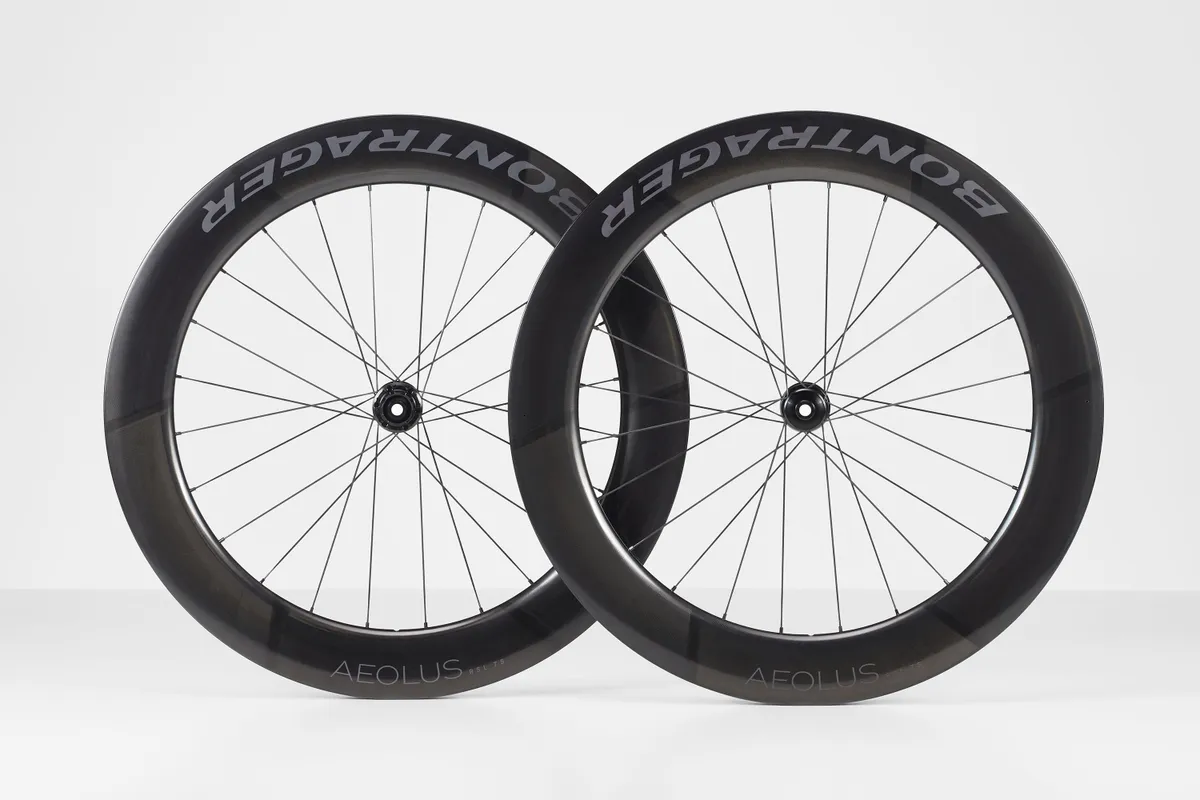
The top-spec Aeolus RSL wheels all feature carbon rims with an external width of 31mm and an internal width of 23mm. This means they will play well with tyres from 25mm wide and satisfy the 105 per cent aero rule of thumb for tyres up to 29.5mm wide.
The more affordable Aeolus Pro 51’s rim is 30mm externally, but offers the same internal width.
The whole range ships with the rim strips and valves needed to go tubeless, and the rims are hooked, so there won’t be any issue running tubed setups either. There also shouldn’t be any compatibility headaches with tubeless tyres that can arise with a hookless rim design.
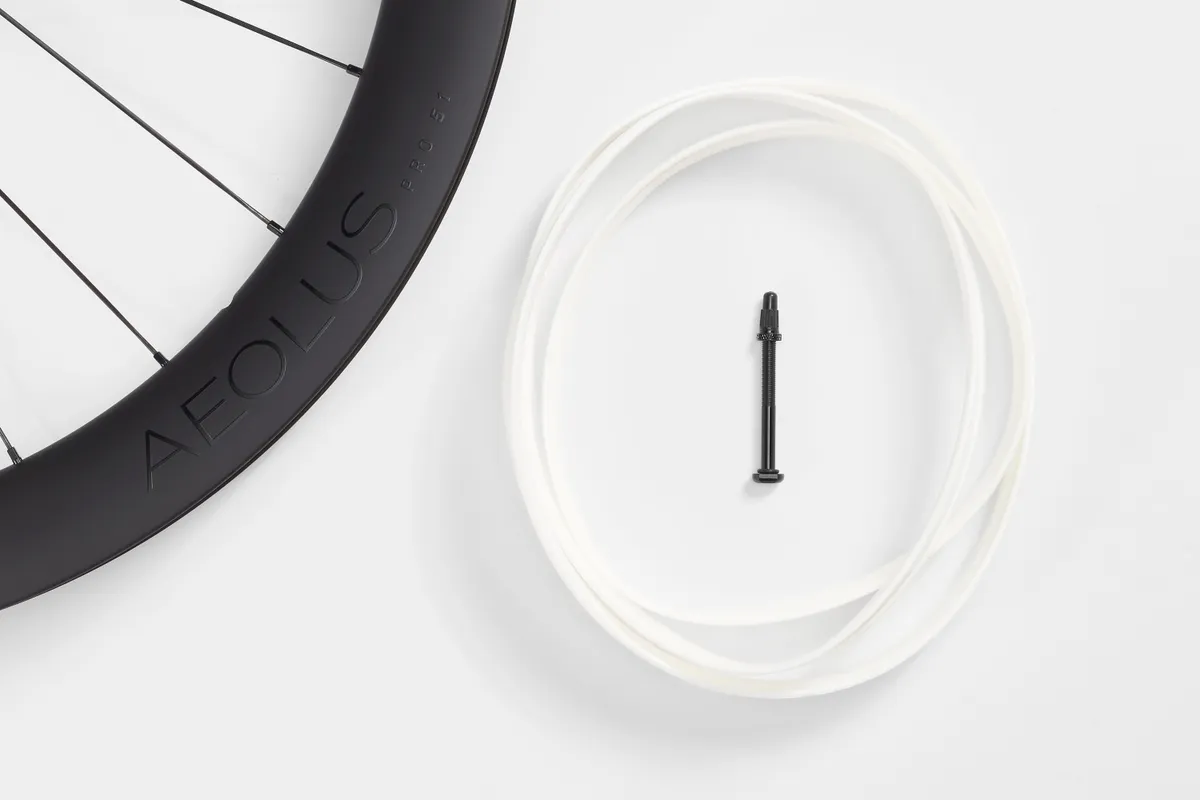
Bontrager doesn’t go into great detail explaining the differences between the top-level and second-tier rims, but the RSL models are said to be made from the “lightest and strongest” OCLV carbon (OCLV stands for “Optimum Compaction Low Void” and has been used as a term since the early days of parent-brand Trek’s carbon bikes).
The more tangible difference is that the RSL models are all built with DT Swiss’s benchmark 240 Ratchet EXP hubs, while the Pro gets the more budget-friendly 350s.
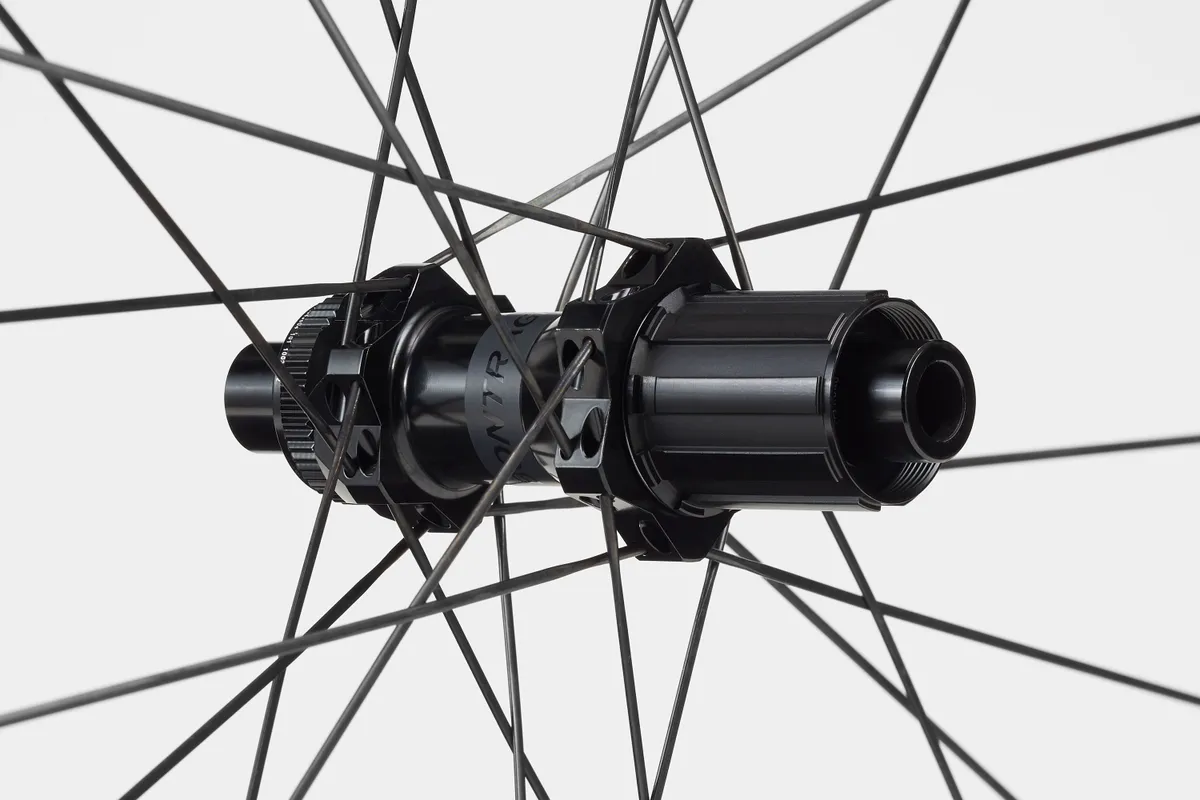
All models are laced with 24 spokes front and rear, and come with Bontrager’s lifetime warranty.
Weights are respectably low across the range, starting at just 1,410g claimed for the Aeolus RSL 51, a fairly impressive number for a tubeless-ready 51mm-deep wheelset.
Bontrager Aeolus RSL/Pro pricing and specs
Aeolus RSL 51/62/75
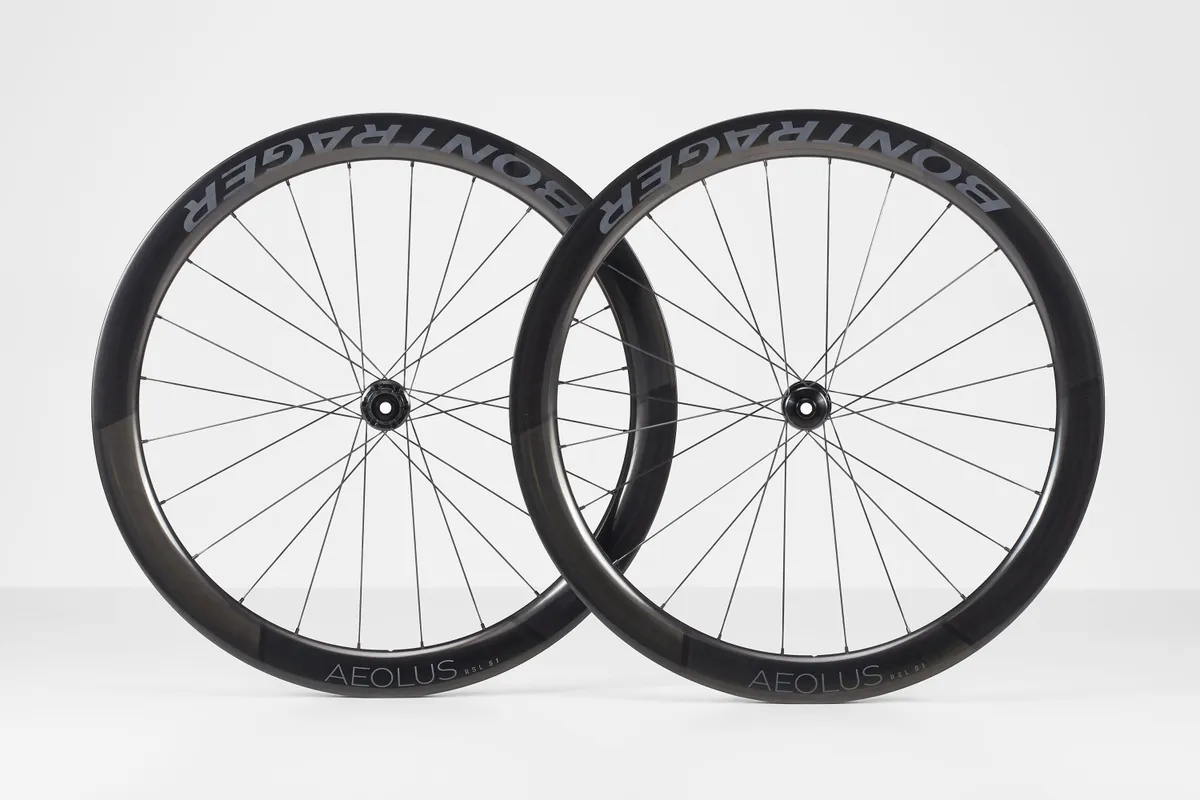
- Carbon: OCLV RSL
- Depth: 51/62/75mm
- Claimed weight: 1,410g (51) / 1,520g (62) / 1,645g (75)
- Inner rim width: 23mm
- Outer rim width: 31mm
- Price (front): £899.99 / $1,149.99
- Price (rear): £1,099.99 / $1,249.99
Aeolus Pro 51
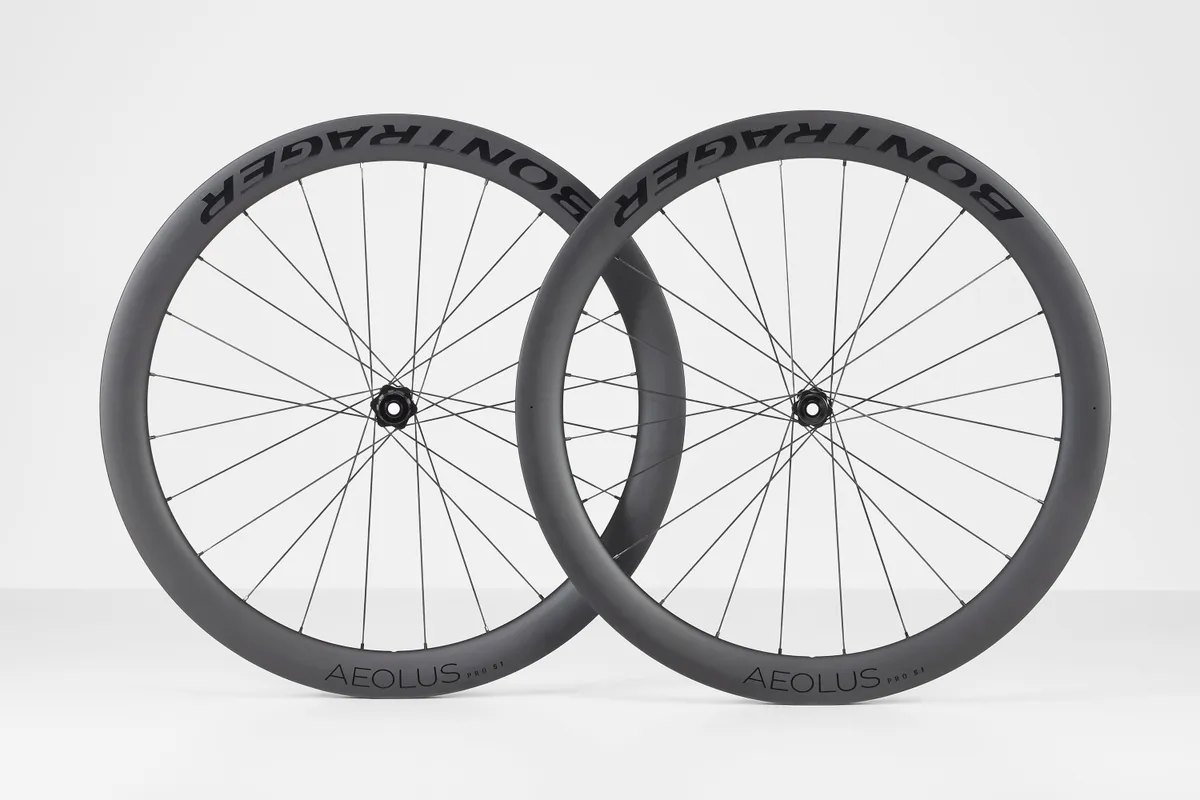
- Carbon: Pro OCLV
- Depth: 51mm
- Claimed weight: 1,590g
- Inner rim width: 23mm
- Outer rim width: 30mm
- Price (front): £549.99 / $579.99
- Price (rear): £649.99 / $719.99
More aero, more stable, and lower rolling resistance?
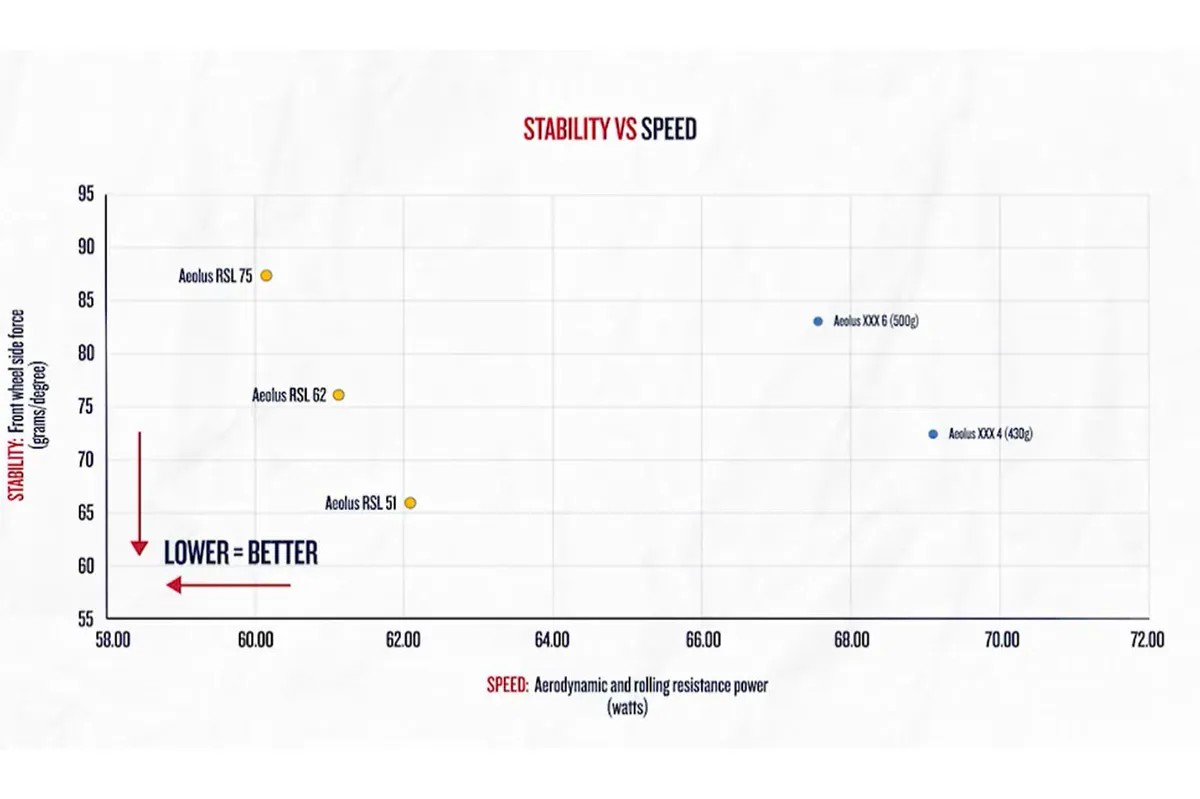
Bontrager claims across-the-board performance improvements from its new range thanks to new wider and deeper rims.
As ever, it’s worth digging into the numbers a little to make sense of it all and put things in context. Compared to the old 47mm deep Aeolus XXX 4, the new Aeolus RSL 51 claims a 16 per cent reduction in front wheel aero drag with a 25mm tyre, at 28mph or, if you prefer, a difference of around 2.5W.
Also on the aero front, Bontrager says its new wheels are more stable, i.e. less prone to being blown around in side winds. For the same conditions as above and in the 0- to 10-degree yaw range with a 7mph average wind speed, Bontrager claims the new wheel offers a 9 per cent improvement, giving a figure of 66g/degree compared to just over 72g/degree for the XXX 4. That’s a difference of a little more than 6g/degree.
The improvements for the Aeolus RSL 62 are of a similar magnitude compared to the old Aeolus XXX 6.
Bontrager also claims the new wheels offer lower rolling resistance thanks to the increased internal width. A number isn’t given for a straight side-by-side Crr (coefficient of rolling resistance) comparison, the brand instead combines this with the aero improvement to claim a 10 per cent boost in both the RSL 51 vs. XXX 4 and RSL 62 vs. XXX 6 comparisons.
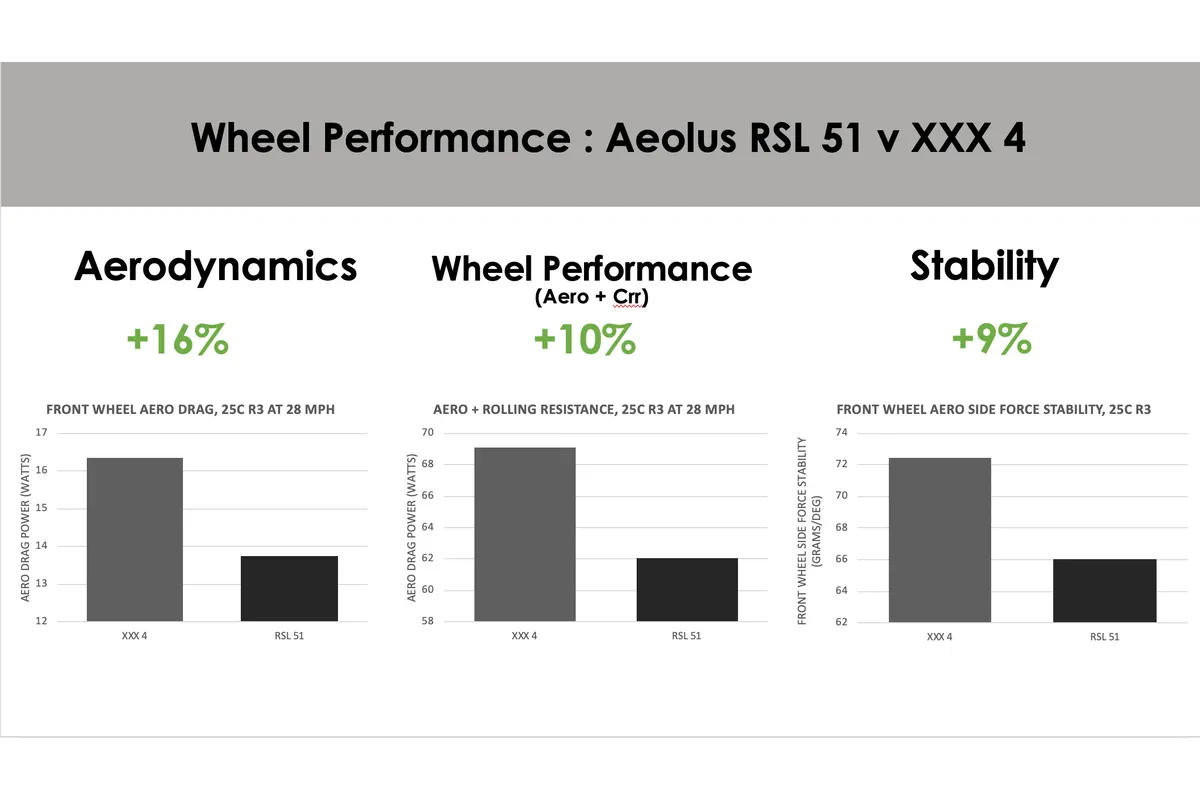
However, given that rolling resistance is being compared at a fixed tyre pressure of 5.6 bar (81psi), this does need some context.
The wider rim of the new wheels will extract more volume from the tyre (this is similar to fitting a wider tyre and keeping rim width the same) and this, in turn, means rolling resistance will be lower because the tyre contact patch is shortened.
However, if you normalise for comfort (a wider tyre at the same pressure will be less comfortable) and adjust the tyre pressure down to compensate, we’d expect that Crr advantage to disappear.
Interestingly, Bontrager claims a specific Crr advantage for the new wheels over the tubular models used by the brand's sponsored riders, amounting to 2W for the RSL 51 vs. the XXX 4 Tubular in a front-of-the-peloton situation, and 3.3W for the RSL 62 vs. XXX 6 Tubular in a 1,500W sprint.
The precise parameters of these comparisons aren’t laid bare, but they chime with the gradually emerging consensus that the best clinchers and tubeless clinchers are faster than the tubulars historically favoured by pros.
Bontrager says that switching to the new Aeolus models could save Trek-Segafredo’s Mads Pedersen 34W in a sprint finish, a non-trivial figure.
